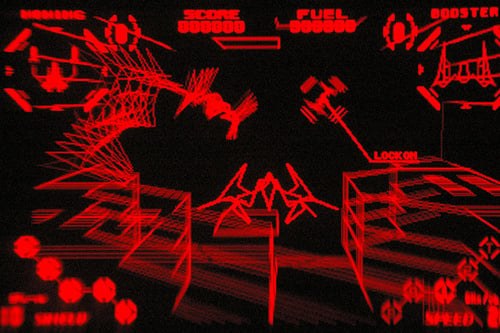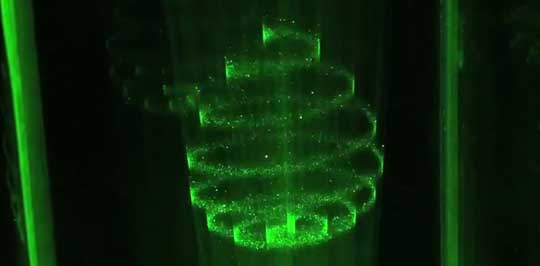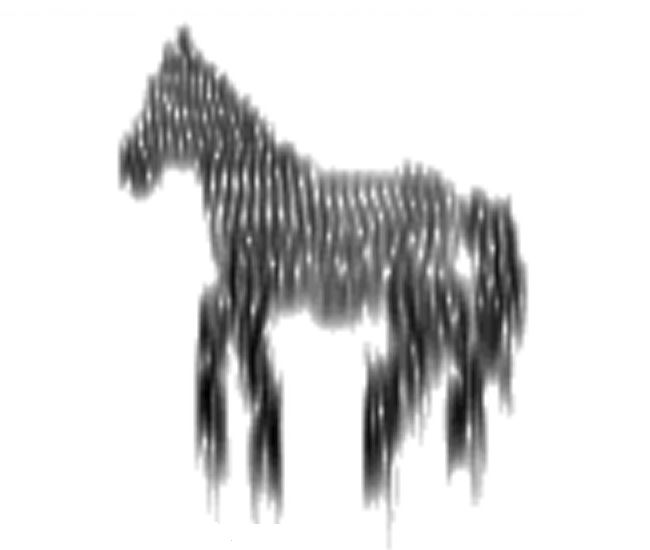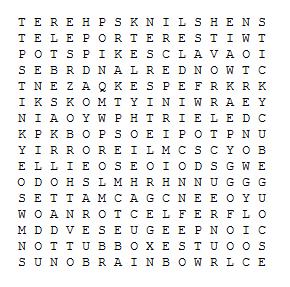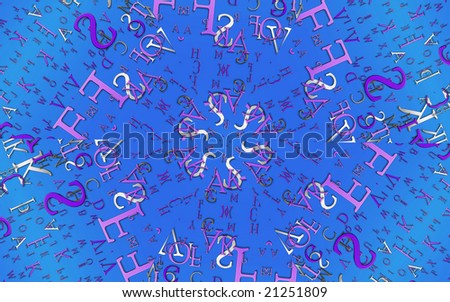The feeling of motion thing is very common on dissociatives.
I love the feeling of my bed lifting off the ground and hurtling through space, BEAUTY
It certainly is. It's the overlap with the flying "OBE" sensations and the specifics of, what to me, are incredibly distinct visuals, that I rarely read users discuss that makes me curious. I had gotten a fair amount of motion sensations similar to riding an elevator or being wheeled around on a gurney before, and had read about them, too. What I was surprised to feel and see during the more recent experiences was "loosing my balls" like I had just left a bungee platform while a glowing holographic projection of the ground rushed towards me from the ceiling then slowed and careened laterally as I hallucinated decelerating g-forces and swooped away from it like I was riding a swing attached to the clouds.
SONN said:
Best MXE experience I've ever had, best opiate/opoid experience I've ever had, and best waking dream-state I've ever been in was on a 7 gram dosage of kratom tea (completely naive to any painkillers whatsoever) and lots of bong rips and a few insufflated eyeballed doses of MXE. My friend was with me playing music as I laid back and nodded out/holed into the craziest waking dream of my life. each time the song ended or I tried to use my motor skills it would go away but it was extremely vivid (about as vivid as my most vivid of dreams) and it was as if I was literally playing the game SSX 3 in my head because I'd been playing it a lot for a few weeks prior. I was flying down a mountain on a snowboard doing aerials and soaring over trees and stuff it was incredible. Other things that happened were I felt myself undergo the transformations that glass undergoes when it goes from molten glass to a drinkable cup because I was in a glassblowing class at the time. I didn't think I was going to tip over though despite what you may be thinking
This lazy river of the mind stuff is one of the main reasons I do MXE.
Sounds like a blast. This is definitely what I'm talking about, and your mentioning that you had been playing the SSX 3 snowboarding game around the time of the experience strikes me as indicative of what is probably an important factor in these experiences: having strong associations with highly dynamic motion, or the simulation of it, in memory (particularly recent memory). Most of us who have spent a long day on thrill rides, skiiing, or swimming among waves have had the entirely sober experience of laying down in bed that night and finding ourselves feeling like we're still moving like we were earlier. I think this is our body's way of rehearsing the experiences in kinesthetic memory. Doing so leads to functional adaptations in balance should we need to return to those dynamic environments in the future.
It's this adaptive faculty that I think can help us make theoretical sense of the visuals as well. A look at the empirical literature on the functional adaptation of the visual cortex in sensory substitutions in the blind will help me make my case.
The first time I experienced these visuals I had to get up, shake them off, and return to bed a number of times just to convince myself that “yep, that did happen.” It strained credulity. I had no memory, after all, of aliens installing a HUD display in my brain, yet there were wire frames of light projected on my ceiling, which were being zoomed in on and rotated while maintaining the constant geometrical properties of physical objects. It was of a different order than the psychedelic visuals or closed eye dissociative mind movies I had experienced previously.
Imagery indicating adaptive changes in the visual cortex in response to sensory substitution training, from “Recruitment of Occipital Cortex during Sensory Substitution Training Linked to Subjective Experience of Seeing in People with Blindness” (2011).
So what do blind people have to do with that? Well, if you've ever run your fingers over braille and could not imagine how the blind could ever read by feeling alone, your disbelief was mostly justified. It appears that the blind “see” braille subjectively much like we see text, just via a sensory adaptation of tactile information in the visual cortex rather than with optical information. One very unfortunate case of a blind nun, proficient at braille reading, who then got in an accident that damaged her visual cortex, which subsequently left her entirely illiterate, illustrates the case. Further, in a study of simulated blindness, only sighted individuals who wore blindfolds for five days straight while learning braille actually started to become proficient, whereas volunteers who took the blindfolds off for even a few minutes a day failed to learn. These findings and many others suggest that sensory deprivation is an integral part of shifting the visual cortex into high gear (fMRI confirmed these suspected significant changes in activity, as seen in a related study above).
The image above is a spectrographic “soundscape” of a horse shape as interpretated by the
vOICe sensory substitution device. Light waves are emitted from the device onto objects and their reflection is translated by its software into noises whose audiological features – pitch, relative volume, etc. – correspond directly to geometrical features of the scanned object. Blind individuals who train with the device with this rationale in mind are eventually able to “see” something similar to the image above when the device is pointed at a wooden cutout of a horse. It's a case of conceptional understanding translating into perceptual projection, as in color-grapheme synesthesia, where synesthetes see unique color auras projected around individual letter and number text concepts. Say if "4" is "red" then the Roman numeral "IV" also possesses the color of the idea of "4," that is, a red color aura, rather than the color auras of the letters "I" and "V" side-by-side. These color auras are probably similar in subjective character to the monochromatic dissociative visual landscapes zn13bt and I have described in this thread. It's this ability to go from concept to direct visualization that makes me believe that by meditating rationally and systematically on our perceptions during dissociative hole experiences we can in some sense engage in a dialogue with the subconscious and help it to cultivate ever-expanding and enriching landscapes of inner experience.
I think the blind users of these sensory substitution devices “see” such images with the same or greater intensity as we see dissociative mind movies – on par with the vividness of dreams – or these open eye “holographic projections” I've experienced. And, further, it's the same astonishingly effective adaptation of the visual cortex in response to sensory deprivation that's behind all of it. Only in the case of dissociative hole experiences, it's our sense of movement in response to becoming detached from bodily signals being corresponded with visual memories of dynamic motion that's producing these object-like landscapes of the mind's eye rather than sound waves or braille. This interpretation also helps me make sense of the incomprehensibly rapid evolution in the sophistication of my own experiences. I've trained myself to enter trances to some degree and have done a lot of metacognitive reflecting on what I'm perceiving to bring it to schematic focus, but I'm undeniably ignorant of how any of it is being constructed for the most part. Now I see it's almost certainly these subconscious changes in the visual cortex that are doing all the heavy lifting.
We all have these profoundly powerful visual-spatial environment simulating bio-computers sitting in our occipital cortexes. It's this computational power of the visual cortex being exploited that helps explain how people who participate in memory competitions are able to use visual-spatial imaging techniques to do things like memorize decks of cards in sequence after a single presentation. With the right approach and understanding I think we can use moderated use of dissociatives – tolerance breaks being critical to getting these effects in my experience – to temporarily transform our heads into cybernetic flight simulators while having one hell of a good and illuminating time in the process (I find it hilarious that years ago talk like this would've seemed ludicrous to me).
It's intriguing that dissociatives are apparently able to spontaneously manifest such astonishing increases in the intensity of visualization, whereas in sober participants just removing a blindfold for a minute a day in the aformentioned 5-day long study of braille learning was enough to seemingly obliterate the functional adaptation in the visual cortex that made tactile literacy possible. It indicates that dissociatives may be the most profound internal visualization technology in existence, and that studying precisely how they achieve their effects could be critical to making leaps in the scientific understanding of perception and the development of more sophisticated prostheses for the blind. But of course, they feel good and cause experiences that undermine religious notions of identity and the sanctity of the body, and are therefore immoral, lethal threats which must be punitively denied. And … well I don't have to convince anybody here of the appalling affront to the advancement of knowledge and well-being that severe prohibition represents.
